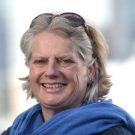The woodpecker's maracas and the duets of owls: Why Nature is the unbeatable soundtrack of Spring
The unmistakable sounds of the world coming awake after winter are enough to put a smile on our faces, even when the skies are still grey and the fields still damp.


It may not look much like spring — the sodden fields, the lowering, grey skies — but at least it is starting to sound like spring (when it’s not the batter of hailstones, the howl of wind or the drip of wet thatch). It’s been rotten lambing weather, but the matronly calling of ewes to their truanting offspring, evoked by Irish poet Katharine Tynan’s early 20th-century work, is one of the happier April noises that contributes to a more cheerful season:
All in the April morning April airs were abroad; The sheep with their little lambs Pass’d me by on the road.— From 'Sheep and Lambs' by Katharine Tynan Hinkson (1859-1931)
At the moment, birds are trilling mainly in solo passages: here the blackbird on flute and the robin on piccolo, there the collared dove marking time and the song thrush filling in melody, the rich mezzo of the woodpigeon in harmony with the pure choirboy treble of the blue tit. If you happen to be near marshland, a male bittern may provide the booming bass line. It’s the gentle overture before the eruption of the operatic chorus in the months to come.
There has been recent publicity about intrusive sounds in rural villages — mostly unmuffled church clocks that bong loudly through the middle of the night, keeping the sleepless awake from hour to fretful hour. During the Easter weekend, valleys on Exmoor and the Brendon Hills were rocked by illegal raves, which is not quite the same music as that of the peal of church bells or the drift of hymns.
It’s true that the neighbour’s hoarse cockerel that can’t quite reach the high notes — cock-a-doodle-do — is pretty tedious at dawn, in the way that tawny owls duetting in the dark night or the elusive cuckoo endlessly repeating itself somehow are not. The silvery tinkle of wind through trees is tuneful and comforting, whereas people who live close enough to a wind turbine will tell you that the whirring is enough to induce madness once it has lodged inside your head.
No one likes incessantly yapping dogs and the bark of a muntjac is one of the natural world’s most ghastly, jarring sounds, yet the scream of a vixen is thrillingly atmospheric, as is the otherworldly grunt of a rutting stag in autumn. Whereas the incessant drilling of construction is soul-destroying, the percussive woodpecker rat-a-tat-tatting on the maracas in an old oak tree lifts the soul. At this time of year, the neighbour’s lawn mower may be forgiven, as it signals welcome rebirth, but the best soundtrack is always that of Nature.
This is the leader article from the April 10, 2024 issue of Country Life.
Sign up for the Country Life Newsletter
Exquisite houses, the beauty of Nature, and how to get the most from your life, straight to your inbox.
-
 What should 1.5 million new homes look like?
What should 1.5 million new homes look like?The King's recent visit to Nansledan with the Prime Minister gives us a clue as to Labour's plans, but what are the benefits of traditional architecture? And can they solve a housing crisis?
By Lucy Denton
-
 Having a ruff day: Kennel Club exhibition highlights the plight of vulnerable spaniel breeds
Having a ruff day: Kennel Club exhibition highlights the plight of vulnerable spaniel breedsPhotographer Melody Fisher has been travelling the UK taking photographs of ‘vulnerable’ spaniel breeds.
By Annunciata Elwes